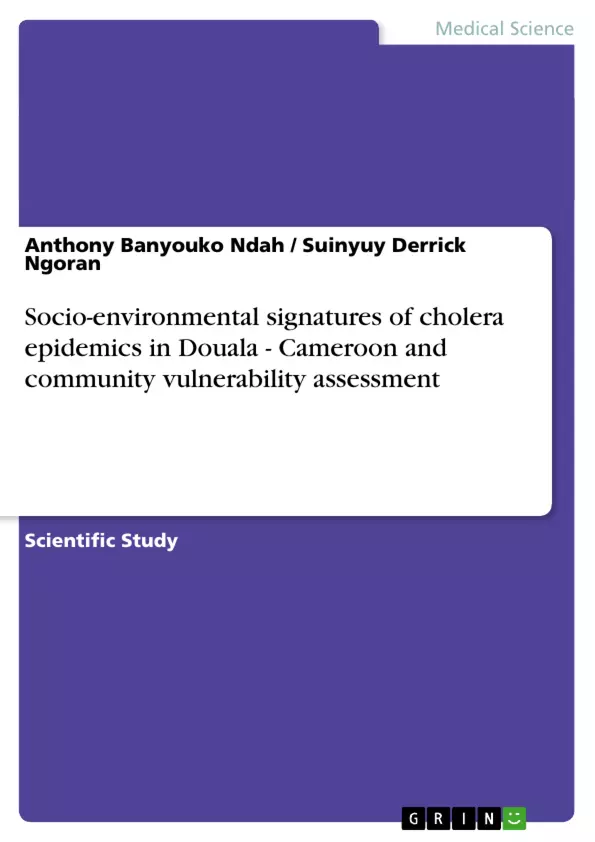Cholera in the Littoral Region of Cameroon, precisely in the city of Douala has become not just a public health crisis but a humanitarian disaster as well. Recently, contrary to the announcement made by the Ministry of Public Health that no case of cholera had been recorded, 23,000 people have contracted cholera and 843 died of the disease in the region between 2010 and 2012 . This study, therefore, establishes the following: 1). Contrary to popular belief that in a cholera endemic setting the greatest burden is in the younger age groups, in the case of Douala, during the 2010, 2011 and 2012 epidemiological periods, the young adult and adult age groups are the most vulnerable; and males are far more vulnerable than females; 2). Cholera risk factors such as slum settlements, lack of proper social amenities and services, for example, potable water; drainage; waste collection; hygiene and sanitation facilities, are generally spread throughout the Littoral Region and Douala in particular, though characterized by glaring unevenness; 3). Social characteristics not generally considered in public health strategies, including: attitudes towards hygiene and sanitation; limited knowledge of diseases/cholera transmission mechanisms, as well as magico-religious beliefs on the origins of cholera, are, however reasons for the high vulnerability to cholera and/or major hindrances to effective mitigation; 4). Finally, it concludes that though there appears to be a direct relationship between the existence of cholera risk factors and community vulnerability, social attitudes and beliefs are the bridge linking these two concepts.
KEYWORDS: Cholera epidemics, Socio-environment, Community vulnerability, effective response, Douala, Cameroon
Inhaltsverzeichnis (Table of Contents)
- Introduction
- Review of the Status of Cholera in Douala
Zielsetzung und Themenschwerpunkte (Objectives and Key Themes)
This study investigates the socio-environmental signatures of cholera epidemics in Douala, Cameroon, with the aim of assessing community vulnerability and identifying potential solutions.
- Age and gender disparities in cholera vulnerability
- The role of cholera risk factors in shaping community vulnerability
- The impact of social attitudes and beliefs on cholera vulnerability
- The relationship between cholera risk factors and community vulnerability
- The potential for effective response strategies
Zusammenfassung der Kapitel (Chapter Summaries)
- Introduction: This chapter introduces the study and provides background information on cholera, including its causes, transmission, and global impact. It highlights the severity of cholera outbreaks in Douala, Cameroon, and underscores the need for understanding the socio-environmental factors influencing vulnerability.
- Review of the Status of Cholera in Douala: This chapter examines the historical context of cholera in Douala, detailing the emergence of the disease and its recurring epidemics. It presents statistics on cholera cases and deaths, emphasizing the significant public health and humanitarian implications of the disease in the Littoral Region of Cameroon.
Schlüsselwörter (Keywords)
This study focuses on cholera epidemics, socio-environmental factors, community vulnerability, effective response strategies, Douala, and Cameroon.
- Citation du texte
- Anthony Banyouko Ndah (Auteur), Suinyuy Derrick Ngoran (Auteur), 2012, Socio-environmental signatures of cholera epidemics in Douala - Cameroon and community vulnerability assessment, Munich, GRIN Verlag, https://www.grin.com/document/269137



